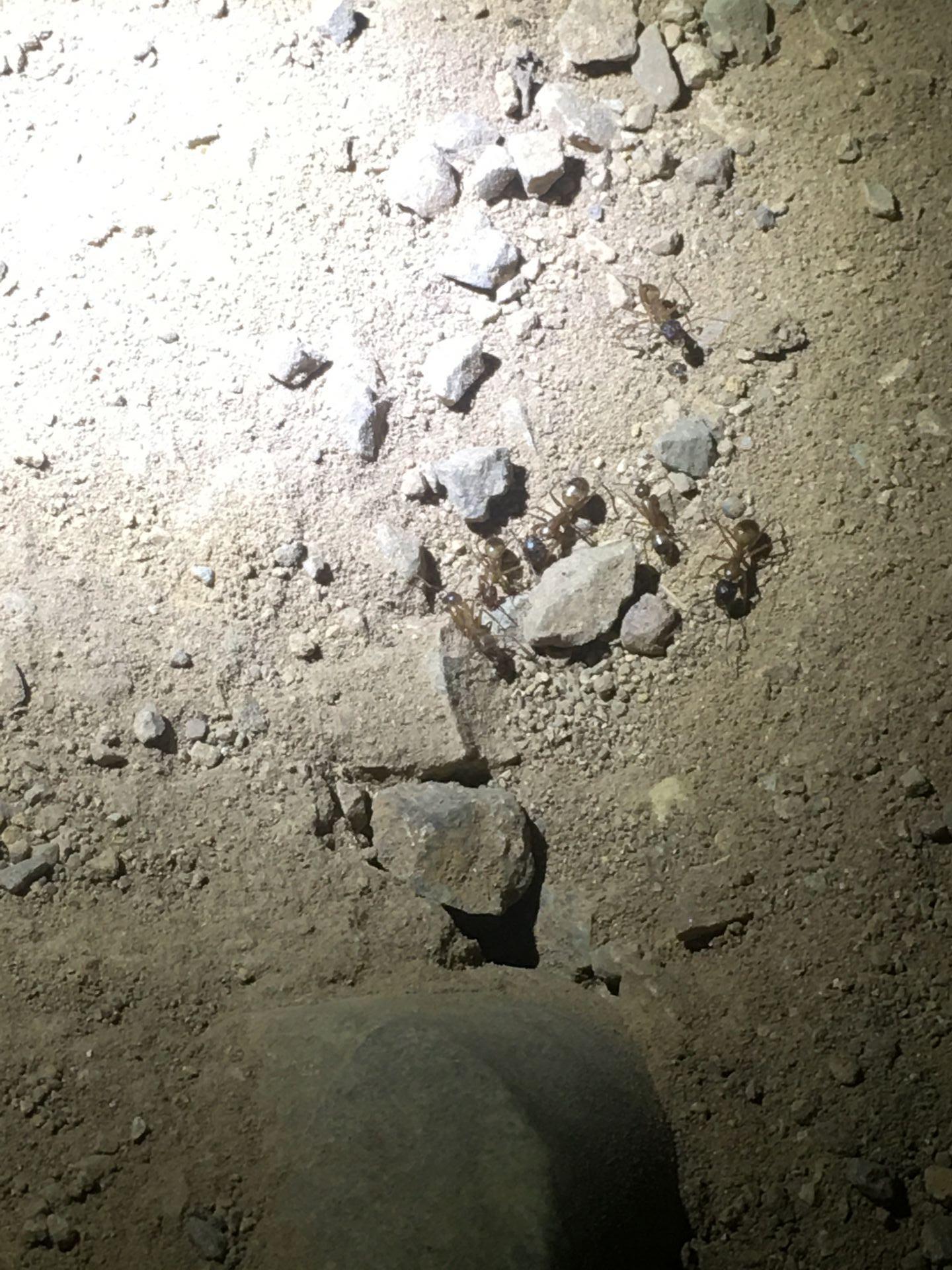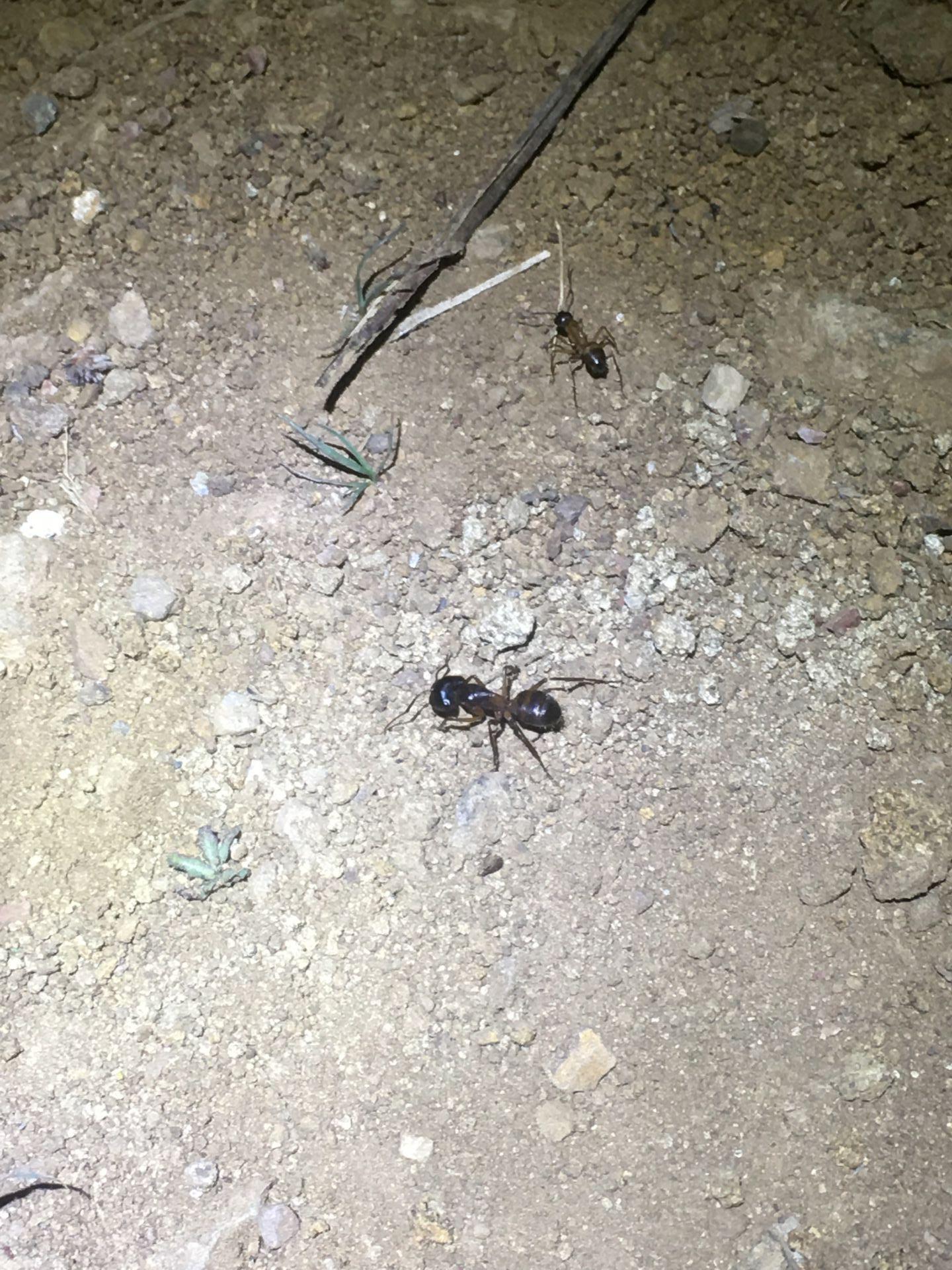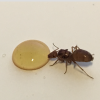It was late last evening towards the end of a 10 mile hike, and I was notably looking forward to reaching the trailhead to catch an Uber back to my apartment. Darkness had crept over the Santa Monica Mountains quicker than I had anticipated. The sun had been blocked by a thick barreling wall of moist fog that almost made it hard to see the trail ahead of me. By the time night had fallen I was breaking out a newly charged headlamp to carefully make my way down the rest of the descending dirt path. It was around those last few miles that I started to notice an increasing amount of fauna: a plethora of spiders with eyes gleaming in the beam of my lamp, small beetles of various genre scurrying by, large toads, and even a scorpion made an appearance.
That's when I found her, sitting right in the middle of the trail, a huge ant. I thought at first that it might just be another super major ( I had seen a few nests of workers clamoring about further up the trail). Getting a closer look, picking the ant up off the path, my heart just about leaped from my chest. I could see the scars from freshly torn wings, now absent on her hulking frame. To the best of my knowledge she was a Camponotus queen, a genus I have come across in the past. Quickly, I went into my backpack and removed a test tube and cotton ball to temporarily transport my new catch ( NEVER hike unprepared). Excitedly, I put the test tube in my front shirt pocket and continued along the trail.
When I had finally arrived at my apartment, kicked off my boots and deservedly sat down, I took a look at my new queen to check on her status. My heart dropped. She was curled up, desperately trying to move as if half of her body was paralyzed. I took her out of the test tube and placed her on a plate, worried that the size of the glass tube may have restricted her movement. No improvement. Something must have happened, what I don't know. This is the second Camponotus queen that I have had suddenly die in transport. I don't assume this behavior is commonplace, I would think such a large genus could handle some transport stress. If anyone has any clues as to this mystery they'd greatly be appreciated. Today a queen is dead, a future colony lost to tragedy.
See a video of the colony I came across: here



























